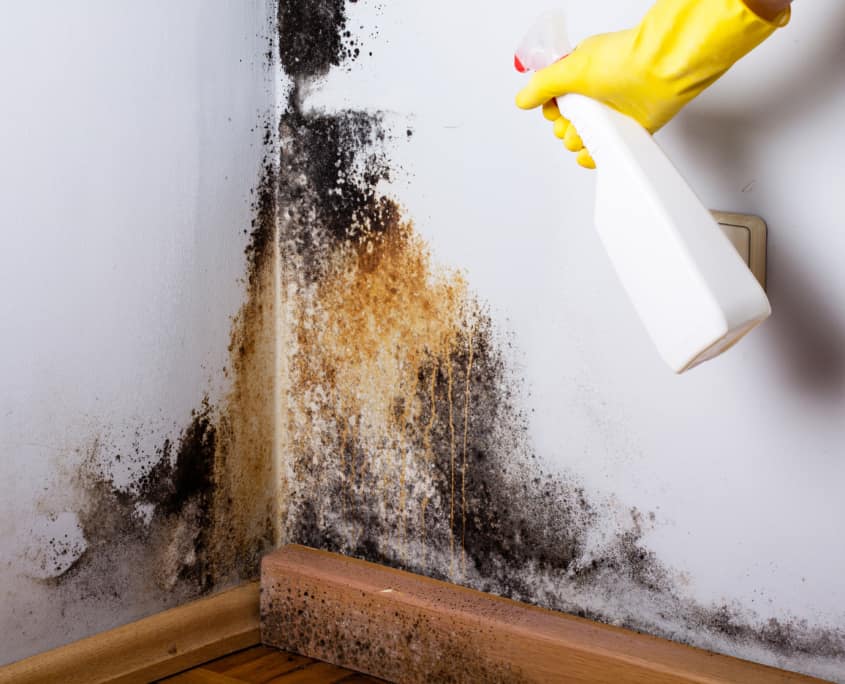Mold needs moisture to thrive, so controlling excess moisture is essential for mold prevention. When too much moisture accumulates in an environment, it creates the perfect conditions for mold to grow rapidly. Excessive humidity, leaks, spills, flooding, indoor humidity sources, outdoor sources—any situation that provides continual access to moisture will lead to dangerous mold infestations if left unaddressed.

Excess moisture enters spaces in many ways:
- High indoor humidity. If humidity levels stay above 50% for long periods, condensation forms and mold emerges. Use humidistats, ventilation, exhaust fans and dehumidifiers to keep levels in check.
- Unrepaired leaks or water damage. Fix any dripping pipes, leaks in roofs, foundations, roofs, etc. immediately. Neglected moisture problems only get worse over time.
- Flooding or spills. Clean and dry flooded or wet areas completely after any spills or floods occur. Porous and non-porous surfaces need to be addressed.
- Indoor sources. Run exhaust fans when cooking, showering or doing laundry. Vent dryers to the outside and avoid prolonged wet pet drying cycles.
- Outdoor sources. Improve airflow and ventilation near foundations. Adjust grades to redirect water away from the house and ensure gutters properly move water off and away from the building.
- Houseplants. Plants help with humidity in moderation but too many can increase excess moisture and mold risks, especially if over-watering occurs. Only keep what can be properly maintained.
- Pests. Mold-loving insects and rodents damage materials and spread mold spores. Eliminate standing water and seal up all entry points to prevent pests.
By fixing moisture problems promptly, controlling indoor humidity levels, and maintaining a vigilant eye out for excess moisture accumulations, you can establish the dry environment necessary for avoiding mold and its health hazards. Staying on alert and making corrections quickly will give you a mold-free home.

